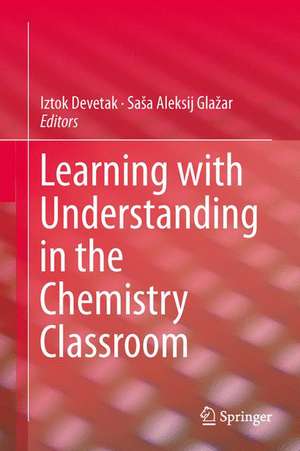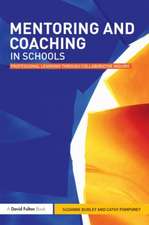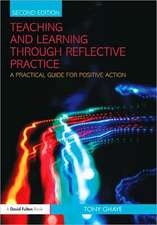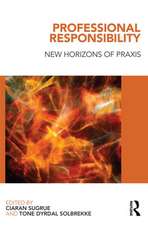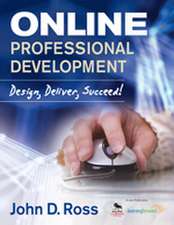Learning with Understanding in the Chemistry Classroom
Editat de Iztok Devetak, Saša Aleksij Glažaren Limba Engleză Hardback – 28 ian 2014
Structured in three sections, the contents deal first with teaching and learning chemistry, discussing general issues and pedagogical strategies using macro, sub-micro and symbolic representations of chemical concepts. Researchers also describe new and productive teaching strategies. The second section examines specific approaches that foster learning with understanding, focusing on techniques such as cooperative learning, presentations, laboratory activities, multimedia simulations and role-playing in forensic chemistry classes. The final part of the book details learner-centered active chemistry learning methods, active computer-aided learning and trainee chemistry teachers` use of student-centered learning during their pre-service education. Comprehensive and highly relevant, this new publication makes a significant contribution to the continuing task of making chemistry classes engaging and effective.
| Toate formatele și edițiile | Preț | Express |
|---|---|---|
| Paperback (1) | 647.27 lei 6-8 săpt. | |
| SPRINGER NETHERLANDS – 18 sep 2016 | 647.27 lei 6-8 săpt. | |
| Hardback (1) | 653.65 lei 6-8 săpt. | |
| SPRINGER NETHERLANDS – 28 ian 2014 | 653.65 lei 6-8 săpt. |
Preț: 653.65 lei
Preț vechi: 769.00 lei
-15% Nou
Puncte Express: 980
Preț estimativ în valută:
125.09€ • 129.23$ • 104.11£
125.09€ • 129.23$ • 104.11£
Carte tipărită la comandă
Livrare economică 25 martie-08 aprilie
Preluare comenzi: 021 569.72.76
Specificații
ISBN-13: 9789400743656
ISBN-10: 9400743653
Pagini: 260
Ilustrații: XVII, 418 p. 129 illus.
Dimensiuni: 155 x 235 x 30 mm
Greutate: 0.79 kg
Ediția:2014
Editura: SPRINGER NETHERLANDS
Colecția Springer
Locul publicării:Dordrecht, Netherlands
ISBN-10: 9400743653
Pagini: 260
Ilustrații: XVII, 418 p. 129 illus.
Dimensiuni: 155 x 235 x 30 mm
Greutate: 0.79 kg
Ediția:2014
Editura: SPRINGER NETHERLANDS
Colecția Springer
Locul publicării:Dordrecht, Netherlands
Public țintă
ResearchCuprins
Section I TEACHING AND LEARNING CHEMISTRY.- Part I UNDERSTANDING CHEMISTRY CONCEPTS.- Constructing active learning in chemistry: concepts, cognition and conceptions, Keith S. Taber.- The development of theoretical frameworks for understanding the learning of chemistry, Gail Chittleborough.- Linking the Macro with the Submicro Levels of Chemistry: The Role of Active Learning by Means of Demonstrations and Experiments, Georgios Tsaparlis.- Teaching Chemistry Conceptually, Vickie M. Williamson.- Debugging Myths about Teaching and Learning Chemistry, Diane M. Bunce.- Part II STUDENTS' CHARACTERISTICS AND CHEMISTRY LEARNING.- The Role of working memory in making the Learning of Chemistry Accessible and Enjoyable, Norman Reid.- Active Learning Educational Strategies Based on the Differences Between Groups of 16-year-old Students Regarding their Gender and Academic Achievements in Chemistry, Iztok Devetak and Saša A. Glažar.- Section II APPROACHES IN CHEMISTRY TEACHING FOR LEARNING WITH UNDERSTANDING.- Part I COOPERATIVE AND COLLABORATIVE LEARNING.- Twenty-five Years of Experience with Cooperative Learning in Chemistry, George M. Bodner and Patricia A. Metz.- Problem Solving through Cooperative Learning in the Chemistry Classroom, Liberato Cardellini.- The learning company approach to promote active learning in secondary chemistry lessons, Torsten Witteck, Katharina Beck, Bettina Most, Stephan Kienast and Ingo Eilks.- Contexts as learning catalysts for students and teachers – approaches and exemplary results from the projects Chemie im Kontext and CHEMOL, Ilka Parchmann, Nina Dunker and Wiebke Endres.- Part II TEACHING STRATEGIES.- Using Worksheets with Different Levels of Guidance to Engage Students in Dynamic Simulations, Sevil Akaygün and Loretta L. Jones.- Evaluation of the Predict-Observe-Explain instructional strategy to enhance students’ understanding of redox reactions, David F Treagust, Zuzi Mthembu and A L Chandrasegaran.- Application of Case Studyand Role-playing in Forensic Chemistry Education, Iwona Maciejowska, Renata Wietecha-Posłuszny, Michał Woźniakiewicz and Paweł Kościelniak.- Students' motivation levels for learning chemistry and their success on design and construct activity, Margareta Vrtačnik and Mojca Juriševič.- Section III CURRICULUM REFORM AND TEACHERS.- Fostering Active Chemistry Learning in Thailand: Towards a Learner-Centred Student Experience, Richard K. Coll, Ninna Jasoon, Chanyah Dahsah and Sanoe Charmain.- Active Learning in Computerized Chemical Education Environments, Yehudit Judy Dori and Miriam Barak.- Pre-service Chemistry Teachers` Use of Active Learning During their Practical Pedagogical Training, Vesna Ferk Savec and Katarina S. Wissiak Grm.
Textul de pe ultima copertă
This volume offers a critical examination of a variety of conceptual approaches to teaching and learning chemistry in the classroom. Presenting up-to-date research and theory and featuring contributions by respected academics on several continents, it explores ways of making chemical knowledge meaningful and relevant to students as well as strategies for effectively communicating the core concepts essential for developing a robust understanding of the subject.
Structured in three sections, the contents deal first with teaching and learning chemistry, discussing general issues and pedagogical strategies using macro, sub-micro and symbolic representations of chemical concepts. Researchers also describe new and productive teaching strategies. The second section examines specific approaches that foster learning with understanding, focusing on techniques such as cooperative learning, laboratory activities, multimedia simulations, and role-playing. The final part of the book details learner-centered active chemistry learning methods, active computer-aided learning, and trainee chemistry teachers` use of student-centered learning during their pre-service education. Comprehensive and highly relevant, this new publication makes a significant contribution to the continuing task of making chemistry classes engaging and effective.
Structured in three sections, the contents deal first with teaching and learning chemistry, discussing general issues and pedagogical strategies using macro, sub-micro and symbolic representations of chemical concepts. Researchers also describe new and productive teaching strategies. The second section examines specific approaches that foster learning with understanding, focusing on techniques such as cooperative learning, laboratory activities, multimedia simulations, and role-playing. The final part of the book details learner-centered active chemistry learning methods, active computer-aided learning, and trainee chemistry teachers` use of student-centered learning during their pre-service education. Comprehensive and highly relevant, this new publication makes a significant contribution to the continuing task of making chemistry classes engaging and effective.
Caracteristici
Shows importance of active learning for the successful teaching and learning of chemistry Suggests teaching approaches developed based on research data Covers all levels of chemistry education from elementary school to university Includes supplementary material: sn.pub/extras
